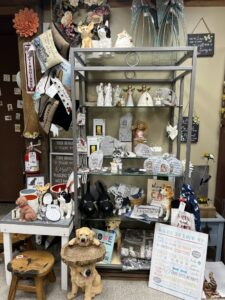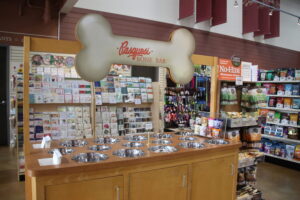The Markdown Truth
Understanding the truth about markdowns can be your first step in turning this negative aspect of the retail business into a positive.
The word itself strikes fear in the hearts of most retailers. Call it by whatever term you wish price adjustment, promotion, or just plain sale the translation is the same and conjures up all sorts of negative emotions. The fact remains however that any reduction in the retail price is really a markdown.
Most folks in the retail business have an inherent disdain for the very word. Taking too many markdowns represents failure in some area or another. Overbuying, duplication, poor timing of deliveries, bad assortment planning, are all recognized causes of markdowns. Excessive markdowns raise the cost of goods sold and result in a reduction in gross margin. When margin levels fall below those of operating expenses, the store has a net loss.
To more fully understand this retail nemesis, let’s uncover some truths about markdowns.
Understanding these truths and employing sound markdown management should help turn what to some is a negative part of the business into a positive.
Truth #1
Markdowns are the tuition retailers must pay for the education they receive from their customers. A lot can be learned about how to buy and price merchandise from past mistakes. If you really want to know where you screwed up, carefully survey your
markdown rack.
Truth #2
Since markdowns are a way of life as well as an important part of the retail business, it is important that a markdown plan be established. Base the markdown plan around the turnover goals of the company. For example, if your turnover goal is three times, it is important to make sure that stock is sold within a 17-week period.
Truth #3
Always explain the markdown to your customer. If you fail to inform your customer that the markdown is for a special buy, end of season clearance, weekend only promotion, etc., you risk customers not believing your prices and every sale turning into a mini auction.
Truth #4
Overbuying is the No. 1 cause of excessive markdowns. Stores don’t go out of business due to high markdowns. They go out of business because they can’t pay for their overbuying. If your turnover goal is three times, you should be careful not to buy more than you can sell within a four-month time frame.
If you buy more than you can sell, you are predestined to experience either excessive markdowns and reduced margins, or slow turnover and poor cash flow. Faced with this option, it is always better to take the markdowns, clear the inventory and generate cash. I have never seen a store go out of business because turnover was too fast and cash flow was too strong … never! On the contrary, I have seen several stores go under with healthy gross margins on their profit and loss statement.
Truth #5
Most retailers have heard of and would agree with the axiom that the first markdown is the cheapest. What this really refers to is that the first price reduction is an effective one. A “cheap” markdown does not refer to a low percentage reduction that does not significantly generate increased sales. A markdown of 30 percent that moves merchandise is therefore “cheaper” than a 20 percent markdown that does not produce the desired results.
Truth #6
The price you paid has nothing to do with the markdown price. The customer does not care what you paid for the product, nor should you. When you get to this point in the sales cycle, your only concern is how quickly you can convert the inventory to cash. From time to time, I encounter stores that are reluctant, and in some cases even refuse, to mark anything below cost. I have never been able to understand the logic behind this thinking.
I suppose the mindset is that money is being lost when in reality much more lost revenue is at stake by not getting cash out of slow selling stock and replacing it with new product. Worse yet is packing goods away in the back room and dragging them out again next year. Your cost is not relevant in a markdown pricing decision.
Truth #7
In most cases, it is a good practice to keep markdown merchandise at the back of the store. You want your customers exposed to new full price products at every opportunity. Exceptions to this would be storewide sale events or seasonal clearance time when a large majority of items are on sale.
Truth #8
Nurture your good customers who do not shop you on price alone. This is where added value comes into play. The cosmetics industry does a great job of this by offering a gift with purchase items. Thank-you notes to good customers also go a long way in showing a customer that you value their patronage.


















 Videos
Videos





